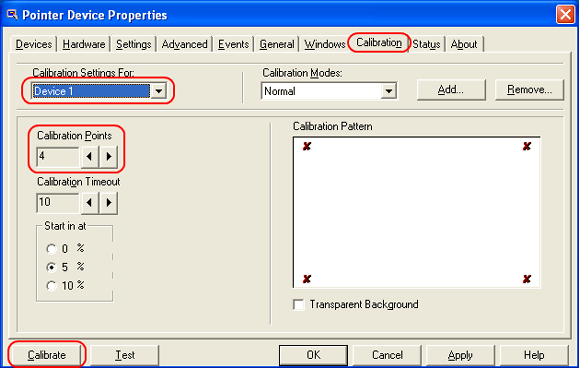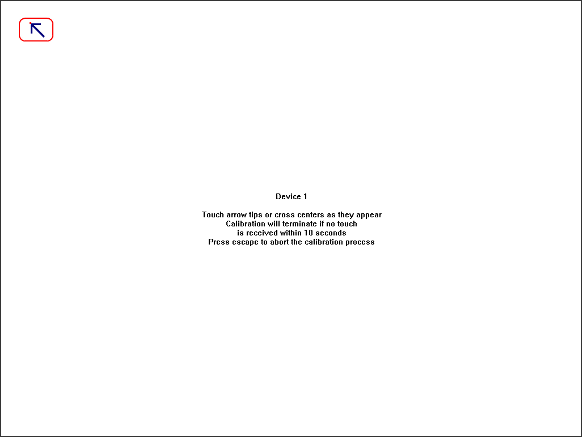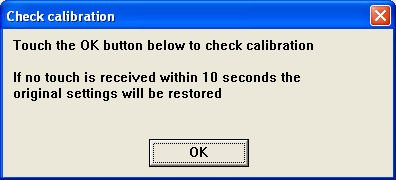 |
 |
| The area where is not touched responds to the touch. |
 |

| Applicable Models |
| PL3000 series, PLx930 series, PLx920 series, PL5910 series, PL5900 series, PS-A series, FP3000 series, FP2000 series |
|
|
|
|
In touch operation, if the area where is not touched responds to the touch, calibration of touch positions should be done with Mouse Emulation Software (UPDD). The followings are the procedure. |
| Calibration |
|
| 1. |
Go to the [Start] menu, and select [Programs] -> [UPDD] -> [Settings]. |
| 2. |
Click the [Calibration] tab to check the followings.
Calibration Settings for: Select a device in use.
Calibration Points: 4 (For the FP3900 or PL3900 series, Select 9.) |
| |

|
| 3. |
Click the [Calibration] to display the screen as shown below. Touch a red point indicated by an arrow in order. |
| |

|
| 4. |
After all of the points are touched, the following message is displayed. Click [OK] to activate the calibraion. This is the end of the procedure. |
| |

|
|
|
The area where is not touched still responds to the touch even after the calibration is done. |
|
If the area where is not touched still responds to the touch even after the calibration is done, check the following items.
| ■ |
Isn't the unit attached tightly? |
| |
If the unit is attached to an operation panel or an other enclosure, remove the unit once, and then check whether the phenomenon is still seen.
|
| ■ |
Is the phenomenon seen on the specific screen? |
| |
The phenomenon might occur if a capacity-consuming program is running such as right after start-up. |
| ■ |
Isn't the surface of the touch panel uneven? |
| |
The phenomenon might occur if the surface of a touch panel is uneven due to aging deterioration. |
|
|
|
|
|



